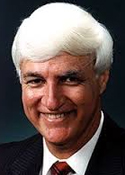Kennedy
Margin: Katter’s Australian Party 2.2%
Region: Far North/Interior, Queensland
In a nutshell: Bob Katter has dominated his electorate as Kennedy since 1993, first as a National and then as an independent, but was run unexpectedly close as voters turned on independents in 2013.
Candidates in ballot paper order

|
VALERIE WEIER DONNA MAREE GALLEHAWK NORM JACOBSEN BOB KATTER JONATHAN PAVETTO |
Bob Katter’s electorate of Kennedy covers 568,993 square kilometres of northern Queensland, accounting for over 30% of the state’s surface area. It covers two disconnected coastal areas, one being a 250 kilometre stretch of the east coast from the southern suburbs of Cairns through Innisfail to Toomulla 35 kilometres north of Townsville, the other the thinly populated Gulf of Carpentaria coast, from the Northern Territory border to the southern part of Cape York Peninsula. The remainder encompasses rural and outback territory including Mount Isa and most of the length of the Northern Territory border.
Kennedy was one of 16 seats out of 75 won by Labor at the first federal election in 1901, and it remained in Labor hands until Nationalist candidate Grosvenor Francis was elected unopposed when sitting member Charles McDonald died during the 1925 election campaign. This prompted the amendment in the Electoral Act that causes the poll in a given electorate to be cancelled and held at a later time if a candidate dies during the campaign, which most recently had effect in Newcastle at the 1998 election. Francis retained the seat at the 1928 election, but it returned to Labor when Jim Scullin’s government came to power in 1929. It next changed hands in 1966 when the national anti-Labor swing combined with the loss of retiring veteran William Riordan’s personal vote delivered a narrow victory to the Country Party candidate, Bob Katter Sr.
Katter’s majority increased at each of the next five elections, and he was further boosted when the 1969 redistribution removed Labor-voting Bowen and added Charters Towers. The 1984 redistribution was less kind, returning the seat to the marginal zone by pushing it into the southern reaches of the Cape York Peninsula. It returned to Labor for one term when Katter retired in 1990, the winning member being Rob Hulls, later to return to politics in Victoria as a senior figure in the Bracks-Brumby government. Hulls was defeated at the 1993 election by Bob Katter Jr, who had represented the local area in state parliament since 1974. Katter cemented his position with a double-digit swing in 1996, and his primary vote increased further after he parted company with the Nationals ahead of the 2001 election.
Katter comfortably topped the poll at next three elections, although he faded from 47.1% to 39.5% in 2007, before rebounding to 46.7% in 2010. The 2010 election result left him as one of three rural independents holding the balance of power in a hung parliament, and he appeared to play the most adroit game of the three in unenthusiastically declaring for the Coalition when Windsor’s and Oakeshott’s backing for Labor rendered it a moot point. He then set about expanding his political empire with the establishment of Katter’s Australian Party, which polled 11.5% at the Queensland state election of March 2012 amid a collapse in support for Labor and elected two members: his son Robbie Katter to the seat of Mount Isa, and former Liberal National Party member Shane Knuth to his existing seat of Dalrymple.
The rise of Katter’s Australian Party was firmly checked at the 2013 federal election, at which it managed only 3.7% of the statewide lower house vote, and singularly failed to get country singer James Blundell elected to the Senate. Worse still, Katter struggled for the first time to win re-election in Kennedy, as his primary vote fell 17.4% to 29.3%. This placed him well behind Liberal National Party candidate Noeline Ikin on 40.8%, but he emerged 2.1% ahead after preferences. The weak performance was variously attributed to Palmer United’s highly successful advertising blitz and a poorly received preference deal with Labor. The terms of the deal delivered Labor preferences to Blundell in the Senate, and Katter preferences to Labor in six Queensland lower house seats it was desperate to win, without in any case succeeding in doing so.
The seat will be contested for the Liberal National Party by Jonathan Pavetto, economic advisor for the Alliance of Electricity Consumers. Pavetto won preselection ahead of Michael Trout, who held the state seat of Barron River from 2012 to 2015; Shane Meteyard, grazier and owner of Milray Contracting; and Karina Samperi, a Cairns management consultant. The narrowly unsuccessful candidate from 2013, Noeline Ikin, withdrew after being diagnosed with cancer.
Analysis by William Bowe. Read William’s blog, The Poll Bludger.


